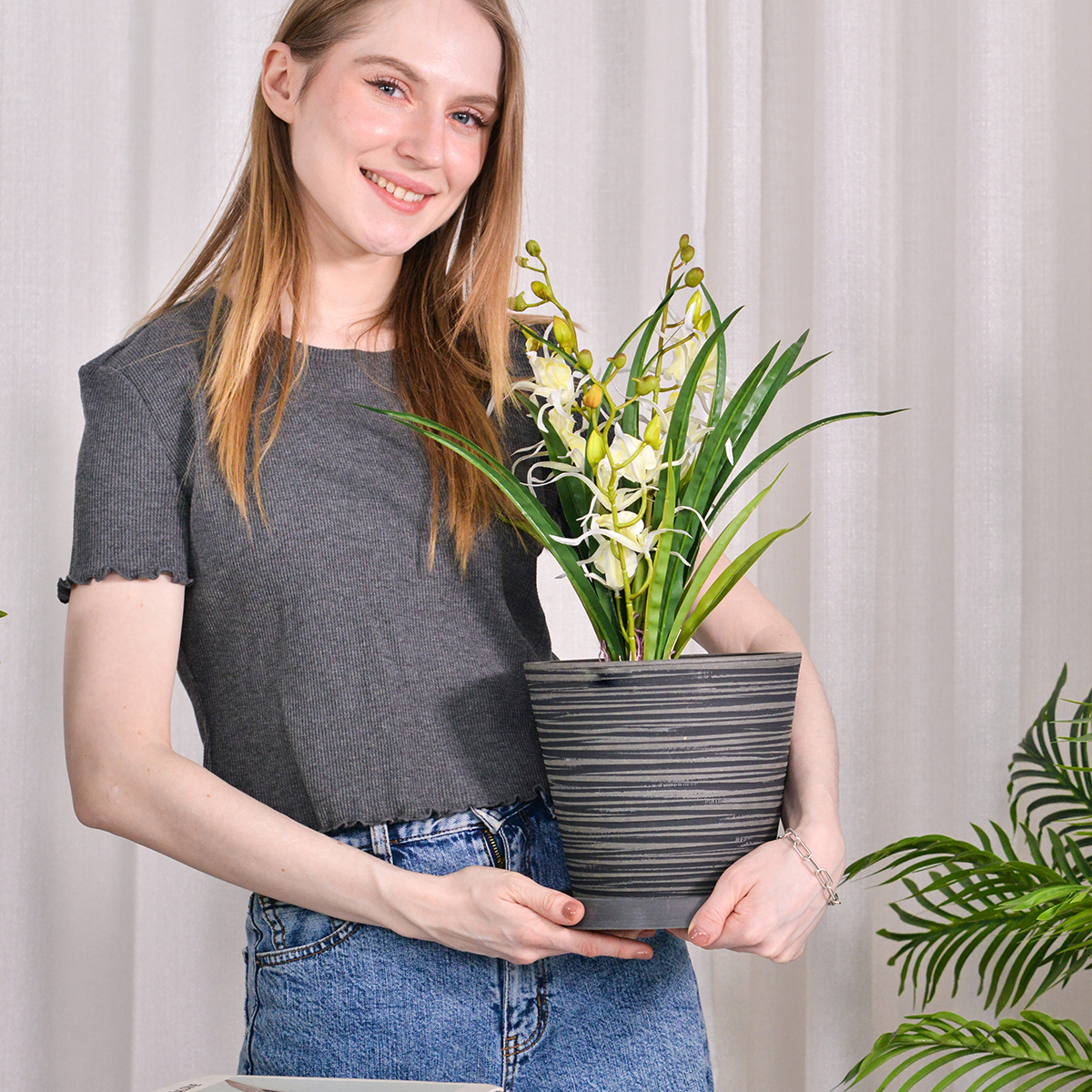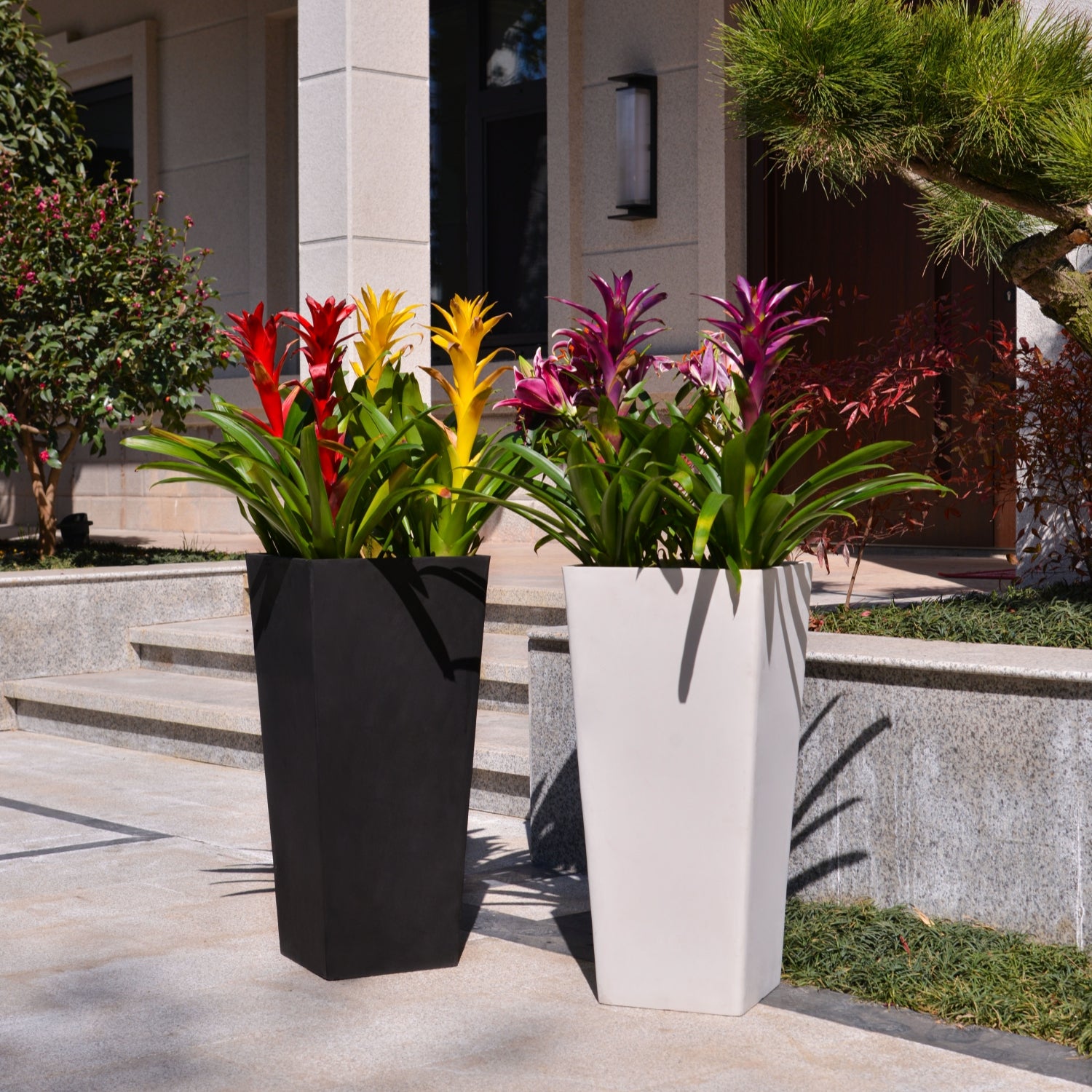Should Flower Pots Have Holes?
Yes, flower pots almost always should have drainage holes. Here’s why:
- Preventing Root Rot: The primary reason for drainage holes is to allow excess water to escape the pot. When water accumulates at the bottom of a pot, it creates a soggy environment that deprives the roots of oxygen. This can lead to root rot, a condition where the roots decay and the plant eventually dies.
- Promoting Healthy Root Growth: Well-draining soil and proper drainage holes allow for better aeration of the root system. Roots need oxygen to function properly and absorb nutrients.
- Flushing Out Excess Salts: Over time, salts from fertilizers and tap water can build up in the soil. Drainage holes allow you to flush out these excess salts by watering thoroughly until water drains out the bottom.

When Drainage Holes Might Not Be Necessary:
There are a few rare exceptions where drainage holes might not be strictly necessary:
- Terrariums: In closed terrariums, a self-contained ecosystem is created where moisture is recycled. However, even in terrariums, a drainage layer of gravel or pebbles is often recommended to prevent waterlogging.
- Specific Aquatic Plants: Some aquatic or semi-aquatic plants are adapted to growing in waterlogged conditions. However, these are specialized plants and not typical houseplants or garden flowers.
- Very Careful Watering: If you are extremely meticulous about watering and can consistently provide the exact right amount of water without any excess, you might be able to grow some plants in pots without drainage holes. However, this is very challenging and not recommended for most people, especially beginners.

What to Do if Your Pot Doesn’t Have Holes:
If you have a decorative pot that you love but it doesn’t have drainage holes, you have a few options:
- Drill Holes: You can carefully drill drainage holes in the bottom of the pot using a drill bit designed for the material of the pot (e.g., ceramic, plastic).
- Use a Liner Pot: You can place a smaller plastic pot with drainage holes inside the decorative pot. This allows you to water the plant properly and then remove the liner pot to drain any excess water.
- Use a Drainage Layer (Less Reliable): You can place a layer of gravel or pebbles at the bottom of the pot to create a drainage layer. However, this is less effective than drainage holes and can still lead to waterlogging if not done carefully.
In summary, for the vast majority of plants grown in pots, drainage holes are essential for their health and survival.
For more information, visit GreenShip
K2-11T
By greenship|2024-08-13T04:21:25+00:00August 13, 2024|Categories: Hand-carving Series|
GreenShip 27inch Tall Planters for Porch, Large Outdoor Planter Pots with Drainage Hole
By greenship-seo|2025-04-10T06:27:21+00:00April 7, 2025|Categories: Hand-carving Series|Tags: Decorative Flower Pots|
11V
By greenship|2024-08-13T03:05:48+00:00August 13, 2024|Categories: Hand-carving Series|




